Hot Topics
2005 2006 2007
Stem cell research and regenerative medicine represent two of the most
exciting and potentially rewarding disciplines of biomedical science. This
resource serves as a reference for some of the recent findings, discoveries and
topics.
Hot Topics - 2007
1) Thecal Stem Cells
There are several scientific
procedures for purifying stem cells. Stem cell cultivation from in
vitro fertilization is one of these techniques. The following illustration
depicts the process in which fertilized eggs mature into blastocysts and how the
stem cells harvested from these blastocysts become specialized tissue types. Click here for
additional information.
2) Transdifferentiation of Mesenchymal Stem Cells
For
the latest breaking news stories involving New Jersey and stem cell research, click here. An
international collection of stem cell and regenerative medicine news can be
found here.
3) Hematopoietic Stem Cells
Human embryonic stem cells (hESC) are pluripotent cells isolated
from the inner cell mass (ICM) of human blastocysts between days 5-8 of
fertilization. The pluripotency of hESCs provides these cells as potential
sources for therapies. Read more. |
 |
4) Stem cells and Spinal Cord Injury
Body tissue regenerates well in young people, but much less so in
older individuals. To discover whether this decline is irreversible, or
influenced by circulatory factors, Conboy et al. joined together the
circulatory systems of young and old rodents, as a parabiotic pair. Read more. |
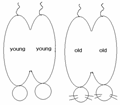 |
5) Erythropoietin/Cancer Stem Cells (?)
The recent surge of interest in stem cell biology has revived
earlier speculation that some human cancers may be a result of genetic mutations
in adult stem cells (ASCs). Read more. |
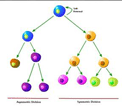 |
6) Embryonic Stem Cells –Dopamine Neurons
Hematopoietic stem cells (HSC) give rise to the different types
of blood and immune cells. HSCs have found a place in the clinical setting as
they are used to treat patients with cancers and other blood disorders. Read more. |
 |
7) Cytokine and Hematopoietic Stem Cells in
whole-embryo culture system
Until recently, it had been thought that a stem cell from a
specific tissue could not give rise to cells of a different organ. However, a
number of experiments over the last decade have challenged this premise, giving
rise to two terms: plasticity and transdifferentiation. Read more. |
8) Canine Embryonic Stem Cells
While some studies have shown the capability of HSCs to form
cells other than blood and immune cells, others have challenged this type of
findings. Previous studied reported that only a small percentage (1-2%) of HSCs
can form neuron-like cells (brain cells) when the HSCs are delivered in the
right conditions. Read
more. |
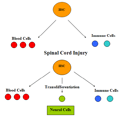 |
9) Stem cells and Neurodegenerative Medicine
While some studies have shown the capability of HSCs to form
cells other than blood and immune cells, others have challenged this type of
findings. Previous studied reported that only a small percentage (1-2%) of HSCs
can form neuron-like cells (brain cells) when the HSCs are delivered in the
right conditions. Read
more. |
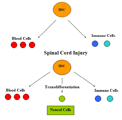 |
10) Stem Cells and Bioengineering
While some studies have shown the capability of HSCs to form
cells other than blood and immune cells, others have challenged this type of
findings. Previous studied reported that only a small percentage (1-2%) of HSCs
can form neuron-like cells (brain cells) when the HSCs are delivered in the
right conditions. Read
more. |
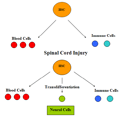 |
11) Cardiac Stem Cells
Embryonic Stem Cells (ESCs) are cells that can be isolated from
the inner cell mass of a blastocyst. The blastocyst is a round mass of cells
that make up the developing embryo at days 5-8. When ESCs divide, the daughter
cells (the two cells derived from the division) have the ability to take on
different paths. One of them can self-renew, meaning that it can form an
identical copy of the ESC, while the other may differentiate, meaning that it
can form the mature cells of the body. Read more. |
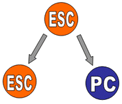 |
Hot Topics - 2006
|
1) Progenitors Systemically Transplanted into Neonatal Mice Localize
to Areas of Active Bone Formation In Vivo: Implications of Cell Therapy for
Skeletal Disease.
Mesenchymal stem cells (MSC) have the potential to differentiate
into a variety of cell types, including osteoblasts, bone cells that produce
Type I collagen. Type I collagen is defective in patients with osteogenesis
imperfecta (OI), a genetic disease that is characterized by fragile bones. Read more. |
 |
2) Evidence of Improved Spinal Cord Injury using a Xenogenic model:
Human Mesenchymal Stem Cells to Rats.
Mesenchymal stem cells (MSCs) are a specific type of stem cell
that has been shown to differentiate into various types of tissues, such as bone
and cartilage. Research has shown that MSCs may also differentiate into nerve
cells. This suggests that MSCs may be useful in creating new nerve cells to aid
in the recovery of patients with nerve damage. Read more. |
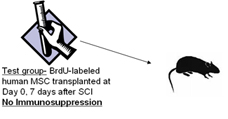 |
3) Stem Cell Niches in Adult Heart (A Murine Model)
Although cardiac stem cells (CSCs) have previously been
identified in the adult cardiac cells, the microenvironment which supports their
growth and survival has yet to be determined. Urbanek et al. suggest that the
clusters of undifferentiated CSCs and lineage-committed cells (LCCs) in the
adult mice’s myocardium are connected structurally to two types of supporting
cells (myocytes and fibroblasts) by junctional and adhesion proteins. Read more. |
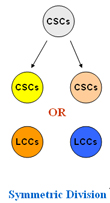 |
4) Efficient generation of retinal progenitor cells from human
embryonic stem cells
Human embryonic stem cells (hESC) shows promise to efficiently
generate retinal progenitors, as demonstrated in the summarized publication by
Lamba et. al. The research is significant due to blindness caused by difficulty
to replace adult mammalian retinal neurons. Read more. |
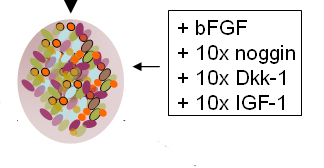 |
5) Signals from the sympathetic nervous system regulate hematopoietic
stem cell egress from bone marrow.
The bone marrow (BM) provides the home, or niche, for
hematopoietic stem cells (HSC). HSC are the stem cells responsible for producing
all of the immune and blood cells. When needed, HSC can exit the BM into the
circulating blood and migrate into injured tissues for repair or cell
replacement. The mechanism by which HSC leave the BM into the blood is not fully
understood. The following study examines how mice expressing a mutant gene
called Cgt could reveal details about this underlying mechanism. Read more. |
 |
6) The JAK2 V617F mutation occurs in hematopoietic stem cell in
polycythemia vera and predisposes toward erythroid differentiation.
It has been posed that Polycythemia Vera (PV) could arise either
in self renewing hematopoietic stem cells (HSC), in non-self renewing
multipotent progenitors or in myeloerythroid progenitors. Jamieson et al. worked
to ascertain that the JAK V617F mutation was found in primitive precursors as
early as HSCs. Read
more. |
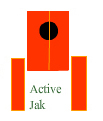 |
7) Multipotent Cells from Human Fetal Liver
The potential application of stem cells for regenerative medicine
is expected to involve complex processes. It is vital to understand the
underlying processes in tissue development and response to injury. In an effort
to study liver development and regeneration, Dan et al sought for a liver stem
cell in the human fetal liver. Read more. |
 |
8) Iron particles for Noninvasive Monitoring of Bone Marrow
Mesenchymal Stem Cell In Infarcted Heart
Bone marrow stromal cells (BMSCs), also known as mesenchymal stem
cells, have shown the potential to differentiate into bone, fat, cartilage and
even cardiac tissue. With half of the patients diagnosed with heart failure
dying within 5 years and billions of dollars spent for their healthcare, it is
no wonder that much research has turned towards these BMSCs as the hope for
solving this problem. Read more. |
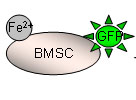 |
9)Developmental Hierarchy and Lineage Commitment in Hematopoietic Progenitors
Lineage commitment and differentiation of hematopoietic Stem
Cells (HSCs) is a poorly understood and highly debated topic in stem cell
discourse. The classic model of hematopoietic differentiation holds that
lineage commitment occurs when a multipotent progenitor (MPP) commits to either
the myeloid or lymphoid lineages. Read more. |
|
10)Ex-vivo Expansion of Human Hematopoietic Stem Cells
This study addresses a major problem, namely ex-vivo expansion
of human Hematopoietic stem cells (hHSCs). Experimental techniques were done to
characterize HSCs using severe combined immunodeficient (SCID) mice in studies
to understand their repopulating ability (SRC assay). SRC assay determines the
in vivo potential of reconstitution or repopulation of the SRC cells in a SCID
mouse. Read
more. |
 |
Hot Topics - 2005
1) International and New Jersey News on Stem Cell and Regenerative
Medicine
There are several scientific procedures for purifying stem
cells. Stem cell cultivation from in vitro fertilization is one of
these techniques. The following illustration depicts the process in which
fertilized eggs mature into blastocysts and how the stem cells harvested from
these blastocysts become specialized tissue types. Click here for additional
information.
2) International and New Jersey News on Stem Cell and Regenerative
Medicine
For the latest breaking news stories involving New Jersey
and stem cell research, click here. An international
collection of stem cell and regenerative medicine news can be found here.
3) Autogeneic feeder cell system as support for the in vitro growth of human embryonic stem cells
Human embryonic stem cells (hESC) are pluripotent cells isolated
from the inner cell mass (ICM) of human blastocysts between days 5-8 of
fertilization. The pluripotency of hESCs provides these cells as potential
sources for therapies. Read more. |
 |
4) Rejuvenation of aged progenitor cells from muscle and liver after
exposure to soluble factors from young animals
Body tissue regenerates well in young people, but much less so in
older individuals. To discover whether this decline is irreversible, or
influenced by circulatory factors, Conboy et al. joined together the
circulatory systems of young and old rodents, as a parabiotic pair. Read more. |
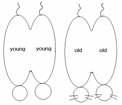 |
5) Parallel between Adult Stem Cells and Cancer Development through
mechanisms involving p53
The recent surge of interest in stem cell biology has revived
earlier speculation that some human cancers may be a result of genetic mutations
in adult stem cells (ASCs). Read more. |
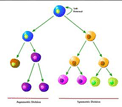 |
6) A method to enhance the expansion of human hematopoietic stem
cells ex vivo
Hematopoietic stem cells (HSC) give rise to the different types
of blood and immune cells. HSCs have found a place in the clinical setting as
they are used to treat patients with cancers and other blood disorders. Read more. |
 |
7) Generation of kidney tissues from human mesenchymal stem
cells in whole-embryo culture system
Until recently, it had been thought that a stem cell from a
specific tissue could not give rise to cells of a different organ. However, a
number of experiments over the last decade have challenged this premise, giving
rise to two terms: plasticity and transdifferentiation. Read more. |
8) Repair of chicken embryonic spinal cord by adult human
hematopoietic stem cells
While some studies have shown the capability of HSCs to form
cells other than blood and immune cells, others have challenged this type of
findings. Previous studied reported that only a small percentage (1-2%) of HSCs
can form neuron-like cells (brain cells) when the HSCs are delivered in the
right conditions. Read
more. |
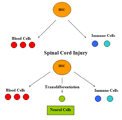 |
9) Bcl-2 could replace serum supplement and feeder-cell for the
growth of mouse embryonic stem cell
Embryonic Stem Cells (ESCs) are cells that can be isolated from
the inner cell mass of a blastocyst. The blastocyst is a round mass of cells
that make up the developing embryo at days 5-8. When ESCs divide, the daughter
cells (the two cells derived from the division) have the ability to take on
different paths. One of them can self-renew, meaning that it can form an
identical copy of the ESC, while the other may differentiate, meaning that it
can form the mature cells of the body. Read more. |
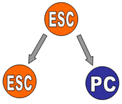 |
|
